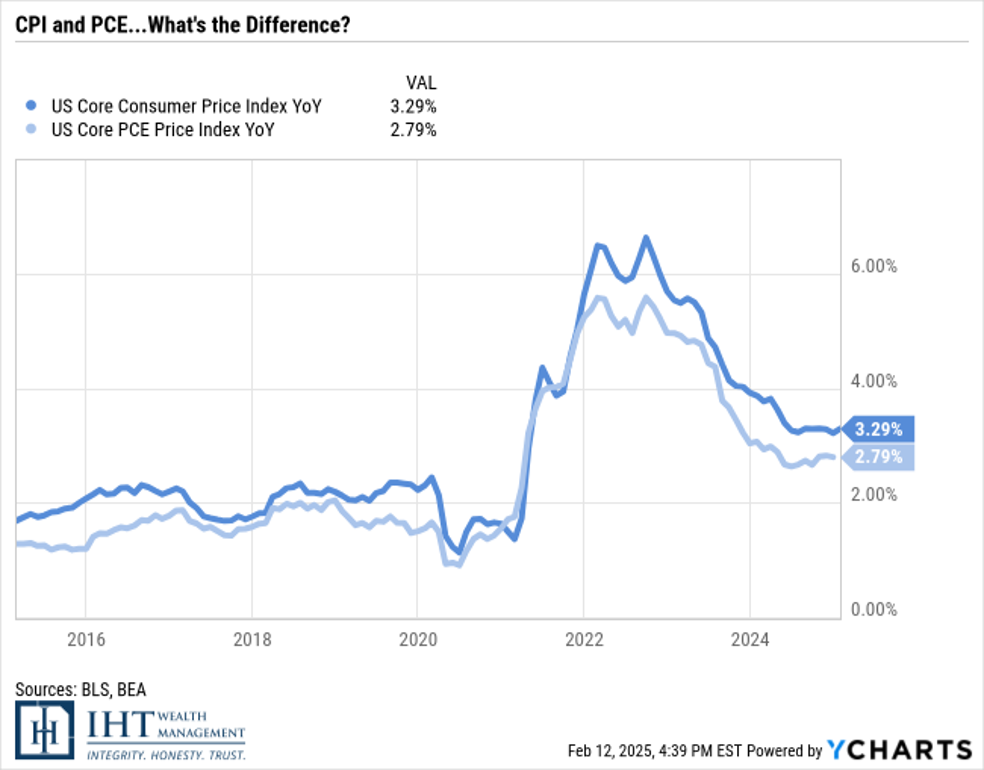
With the release of January’s CPI figures on Wednesday, inflation has proved stickier than expected. But which inflation gauge is actually worth paying attention to? The US Consumer Price Index (CPI) and Personal Consumption Expenditure Index (PCE) both have an underlying basket of goods and services used to calculate their indexes, but the main difference lies in how those items are weighted.
There’s a reason the Fed prefers the PCE index – it’s backed by hard data. When calculating the weights assigned to each good and service in the index, actual spending data gathered by the Bureau of Economic Analysis (BEA) is used, rather than annual survey data used in calculating the CPI, to determine what percentage of people’s paychecks gets spent across healthcare, groceries, gas, capital goods, etc.
Generally speaking, core PCE will run cooler than core CPI. The core figures exclude volatile food and energy prices and give a better feel for actual price increases across the economy. PCE recognizes that people substitute cheaper goods when prices rise and will update its underlying basket monthly, while CPI’s basket of goods and services is relatively constant with weights updated on an annual basis.
It’s important to note that just because PCE is less than CPI, doesn’t mean inflation should be downplayed. Nobody likes making substitutions when spending, so inflation will still hurt when CPI is high, even if it’s PCE that represents the real ability for people to get by.
While the headlines are talking about CPI, keep in mind that the Fed’s decision on interest rates, which affects everything from your credit card rates to mortgage rates, will depend more on the PCE print scheduled to be released on February 28th.